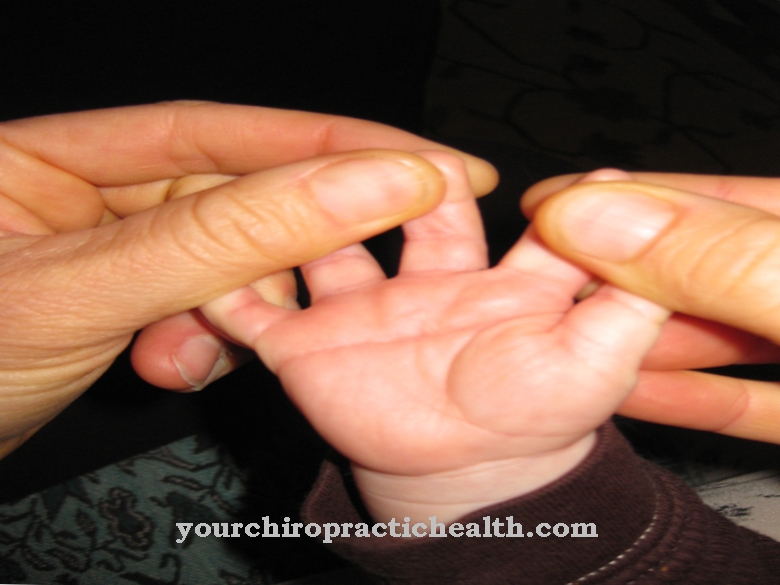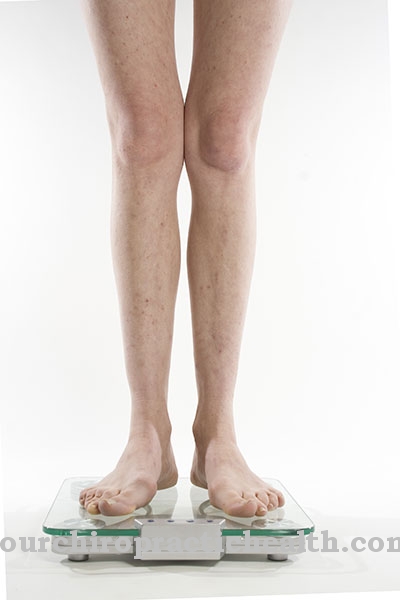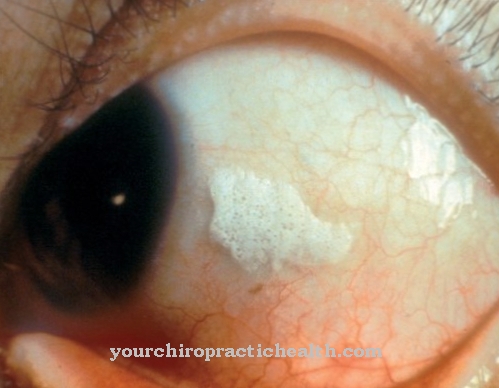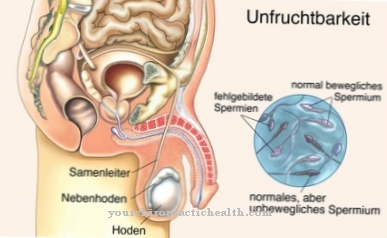Under one Dentinogenesis imperfecta the doctor describes an inheritable disease. Dentinogenesis imperfecta subsequently leads to a malformation of the dentin, which results in the enamel loosening and the dentin being released. Due to the abrasion caused by chewing, the dentin breaks down down to the gums.
What is Dentinogenesis Imperfecta?

© kocakayaali - stock.adobe.com
Dentinogenesis imperfecta is an autosomal dominant inherited structural disorder or incorrect development of the tooth intentions; Dentinogenesis imperfecta affects one in 8,000 people. The Dentinogenesis imperfecta is also called Capdepont syndrome and divided into three types:
- Type I (also known as Shields DI Type I) manifests itself in the context of osteogenesis imperfecta (OI - also known as glass bone disease) and sometimes also means that progressive hearing loss occurs over time.
- Type II (also known as Shields DI Type II or as the hereditary opalescent type) is a genetic predisposition that can also occur like osteogenesis imperfecta.
- Type III (shell teeth type or Brandywine type) is comparable to type II and was documented for the first time in Brandywine (USA).
causes
The cause of the development lies in the development phase of the teeth; a gene plays an essential role in this. This means that the predisposition to dentinogenesis imperfecta can also be inherited. Since an exchange of cells, which has to do with dentin, occurs during the development of the hard tooth substance, there is an undersupply of dentin, so that increased water retention in the tooth enamel can be observed.
As a result of this condition, a tooth deformity occurs. However, the deformities only become apparent after the teeth have erupted. The malformations not only occur in the permanent teeth, but can also be observed in the deciduous dentition.
You can find your medication here
➔ Toothache medicationSymptoms, ailments & signs
In the context of Dentinogenesis imperfecta, the teeth show a gentle bluish discoloration. The enamel is missing or cracked; Sometimes there is also a malformation of the substructure because the dentin is malformed. The structure of the dentin is abnormal and also has an irregular arrangement. Due to the abrasion caused by chewing, the enamel is subsequently destroyed.
The dentin is then exposed and “chewed off” over time. By means of X-rays, the doctor can see a significantly reduced contrast representation of the tooth tissue. Sometimes the doctor also notices a shortening of the tooth roots; another sign that it is dentinogenesis imperfecta. The pulp cavities and also the root canals are closed by dentine; However, if there is still a residual pulp, no so-called secondary dentine can be formed.
This is because no odontoblasts are available. As a rule, however, there is no pulp.The missing pulp also explains the freedom from pain; even if the dentin has been chewed down to the gums and normally this condition would cause enormous pain. If the dentinogenesis imperfecta remains untreated, the tooth can actually be "chewed" down to the gums.
Diagnosis & course
The doctor makes the diagnosis on the basis of the patient's medical history and the clinical examinations and radiological findings. However, until molecular genetic tests have been carried out, it is a purely suspected diagnosis. Only after the genetic test can a secure diagnosis be made that dentinogenesis imperfecta is actually present.
If the dentinogenesis imperfecta is treated, the quality of life can very well be increased; the prognoses are - depending on the type and extent of the dentinogenesis imperfecta - different, but consistently positive. If the patient leaves the dentinogenesis imperfecta untreated, the condition of the teeth deteriorates. It is therefore important that the teeth are provided with fillings, crowns and abutments.
In this way, it is possible for the teeth to have a "normal appearance". It is important that a doctor is contacted who has also been able to gather experience in the treatment of dentinogenesis imperfecta. There are certainly dentists who refuse to treat Dentinogenesis imperfecta patients.
Complications
Due to the dentinogenesis imperfecta, there are in most cases discomfort in the oral cavity. The patient suffers from severe malformations and a breakdown of the tooth enamel. The dentin can even break down towards the gums and lead to complications in the oral cavity. The patient's tooth roots are also shortened and can even be closed.
If the dentin is actually chewed down to the gums, the pain is extremely severe. Due to the pain, the affected person can no longer eat and drink normally, so that there are severe restrictions in everyday life. In many cases, patients also experience dehydration and weight loss. The pain can also lead to psychological complaints and depression. Often the patients appear irritated and slightly aggressive.
The treatment of Dentinogenesis imperfecta is primarily aimed at minimizing abrasion. This avoids complete destruction. As a rule, cosmetic treatments are also necessary so that the person concerned feels comfortable and does not suffer from inferiority complexes. The teeth are filled with a filling material. Furthermore, there are no further complications. In the worst case, the patient can suffer tooth loss without treatment.
When should you go to the doctor?
If a slightly bluish discoloration of the teeth is noticed, this indicates dentinogenesis imperfecta. A visit to the dentist is recommended if this blue discoloration does not go away on its own after a few days or if further symptoms arise. In the further course, the hereditary disease manifests itself, for example, through visible redness and inflammation. In the event of these symptoms, a doctor must be consulted immediately who will clarify the cause and, if necessary, treat it directly.
At the latest when pain develops, an immediate doctor's visit is indicated. Patients who already suffer from other dental problems are particularly prone to dentinogenesis imperfecta. They should visit the dentist regularly and have any signs of illness clarified immediately.
People who have already been diagnosed with the disease but have not yet broken out should also arrange for regular check-ups at the dentist's office. Occasionally, dentinogenesis imperfecta can be treated before it breaks out. Those affected should talk to the dentist about the possibilities of such early treatment.
Doctors & therapists in your area
Treatment & Therapy
In the context of Dentinogenesis imperfecta, the main aim of the treatment is to minimize abrasion as much as possible. Only in this way can the teeth be rehabilitated when enormous signs of wear are already visible. The aesthetics can also be optimized; any other options are preventive measures so that no consequential damage occurs. The molars are usually provided with dental crowns.
This reduces wear on the teeth and the lower and upper jaw can be stabilized. The doctor puts stainless steel crowns on the back teeth; the front teeth are then treated with a filling material. Above all, treatment with filling material is essential for permanent teeth.
At the beginning of the treatment, however, the doctor also makes sure that he treats any carious defects. Caries is eliminated with dental fillings. Furthermore, regular control visits must be made so that in the event of any changes or deterioration, further measures can be taken so that the doctor can prevent consequential damage or the loss of the teeth.
Outlook & forecast
Dentinogenesis imperfecta is incurable. Despite intensive dental treatment, the wear and tear of the teeth progresses. The tooth mobility is also increased by rudimentary tooth roots. After all, the structural anomalies of the teeth often lead to toothlessness at an early age.
The classic treatment measures can only delay the destruction of the teeth a little. To minimize the extreme signs of wear and tear, the teeth must be protected by crowns. Since there is no connection between the enamel and the dentine, the slightest stresses on unprotected teeth lead to the enamel flaking off.
Another problem arises from the yellow-brown to blue-gray discoloration of the teeth. In addition to the functional disorders of the teeth, the affected patients also suffer from considerable psychological pressure. In today's society, aesthetics are very important. Patients suffering from dentinogenesis imperfecta do not fit into the generally recognized well-groomed appearance.
This often leads to social exclusion. Affected people often withdraw. They suffer from the general expectations of society that only accept an aesthetic overall picture. As a result, psychological abnormalities can develop, which often lead to depression and thoughts of suicide.
With the classic treatment methods, the signs of wear, the discoloration and the loss of the teeth cannot be stopped in the long run. In perspective, only a complete denture can stabilize the patient's self-esteem again.
You can find your medication here
➔ Toothache medicationprevention
Dentinogenesis imperfecta cannot be prevented. This is because it is a genetic disease. There are neither favorable nor preventive measures to prevent dentinogenesis imperfecta. It is important that patients with dentinogenesis imperfecta are treated at an early stage and that regular medical examinations take place.
Aftercare
Direct follow-up care is not possible with Dentinogenesis imperfecta as it is a hereditary disease. It must therefore be treated symptomatically, since a causal treatment is not possible. However, those affected by Dentinogenesis imperfecta must always take care of their teeth and avoid sweet foods as much as possible in order not to promote the development of caries.
As a rule, the life expectancy is not negatively influenced by the dentinogenesis imperfecta. If pain or other unpleasant symptoms occur in the oral cavity, the person concerned should always consult a doctor. Very warm and very cold food and drinks should also be avoided so as not to irritate the teeth even more.
A healthy diet generally has a very positive effect on the course of dentinogenesis imperfecta. In most cases, the disease is treated with oral surgery. Furthermore, the teeth need regular care.
In the case of psychological complaints due to the aesthetic restrictions, a visit to a psychologist is recommended in order to avoid depression and other psychological upsets. In children in particular, early diagnosis and treatment have a positive effect on the further course of the disease.
You can do that yourself
Dentinogenesis imperfecta must definitely be treated by a doctor. In addition to dental therapy, some self-help measures and various household and natural resources can promote dental health.
First of all, good dental hygiene must be observed. Teeth should be brushed with medicated toothpaste at least three times a day and flossed daily. In addition, a dentist should be visited regularly, who can monitor the progression of the disease and react quickly to complications.
If consequential damage has already developed or if the teeth have even fallen out, not much can be done by oneself. Specialist treatment is then absolutely necessary. Until this happens, irritating substances should be avoided in order to avoid inflammation of the tooth necks and the oral mucosa.
With Dentigonesis imperfecta, a healthy, sugar-free diet should always be ensured. All substances that could further irritate the gums and teeth should be avoided. Grinding teeth and similar compulsive actions should be restricted if possible, because this will worsen the symptoms in the long run. If in doubt, therapeutic advice is also useful.



.jpg)























